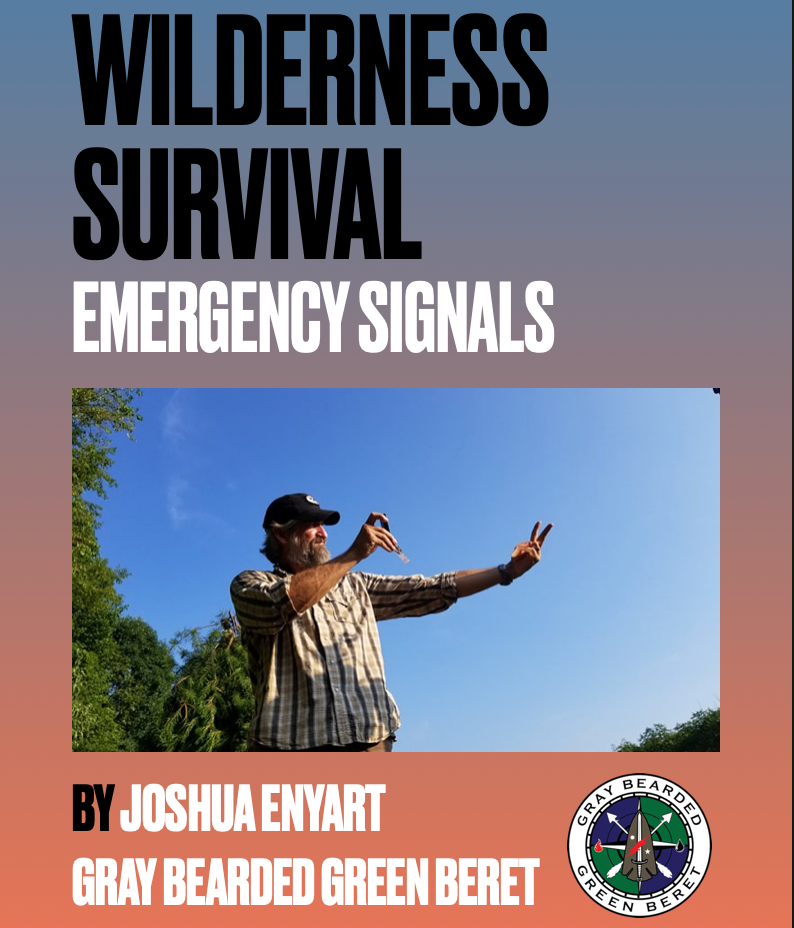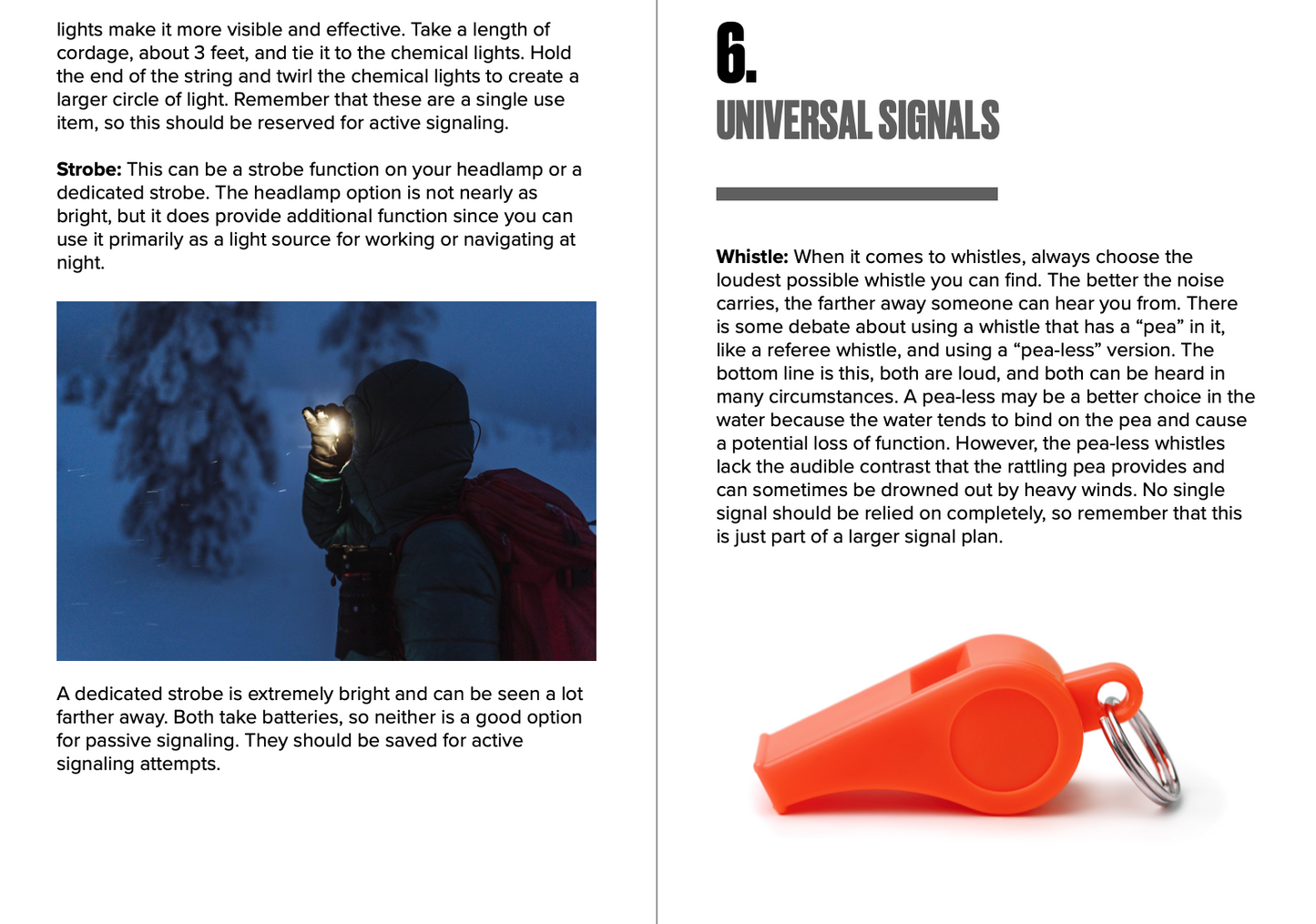Wilderness Survival PDF Series Part Twelve: Emergency Signals
Wilderness Survival PDF Series Part Twelve: Emergency Signals
Couldn't load pickup availability
Product Highlights
Product Highlights
Format: Digital PDF Download
Author: Joshua Enyart (Gray Bearded Green Beret)
Pages: 26 Full-Color Pages
Word Count: 2,212 Words
Included Content: Trip planning, passive and active day/night signals, reflective and high-visibility tools, Multicolor Signal String, Passive Signal Circle, whistles, mirrors, strobes, chemical lights, fire and smoke signals, universal distress codes.
Emergency Signals PDF: How to Communicate Distress in the Wilderness by Gray Bearded Green Beret
In Wilderness Survival Series Part Twelve: Emergency Signals, Joshua Enyart (the Gray Bearded Green Beret) teaches you how to plan, build, and employ effective signals to increase your chances of rescue in an emergency. This 26-page digital guide (2,212 words) provides clear instruction on both passive and active signaling methods—day and night—so you can be found quickly when it matters most.
From reflective markers and signal mirrors to fire lays and smoke generators, this guide ensures you have a layered, practical system for drawing attention when standard communication fails.
What You’ll Learn in the Emergency Signals Guide
Planning Ahead
- Why leaving a detailed trip plan with someone is the first step in rescue readiness.
- What information to provide: route, return time, vehicle, gear, and identifying details.
Passive Day & Night Signals
- Signal panels, trail marking tape, and high-visibility gear.
- Reflective tape, tacks, and cordage for night visibility.
- The Multicolor Signal String system: color, contrast, movement, and reflection.
- How to create a Passive Signal Circle to expand your visibility footprint.
Active Signaling Methods
- Signal mirrors and improvised flags for daytime.
- Chemical lights (including the “Chem Buzzsaw”) and strobes for nighttime.
- Whistles and metallic objects as universal sound signals.
Fire and Smoke Signals
- Using fire as both a survival tool and a signal.
- Three-fire layouts as a universal distress code.
- Building smoke generators for long-distance, high-visibility signals.
Universal Distress Codes
- The importance of “three of anything” as a recognized signal.
- How to integrate redundancy into your signaling plan.
Why Choose This Guide?
- Focused Content: Dedicated to signaling—an often overlooked but life-saving survival skill.
- Practical & Realistic: Covers both gear-based and improvised methods with clear steps.
- Expert Instruction: Joshua Enyart draws on real-world survival and military experience.
- Compact & Accessible: A concise, 26-page reference designed for field use or pre-trip study.
- Part of the GB2 System of Training™: Complements the full Wilderness Survival Series for a complete preparedness foundation.
Specifications
- Author: Joshua Enyart (Gray Bearded Green Beret)
- Pages: 26 Full-Color Pages
- Word Count: 2,212 Words
- Included Content: Trip planning, passive and active day/night signals, reflective and high-visibility tools, Multicolor Signal String, Passive Signal Circle, whistles, mirrors, strobes, chemical lights, fire and smoke signals, universal distress codes.
Share






